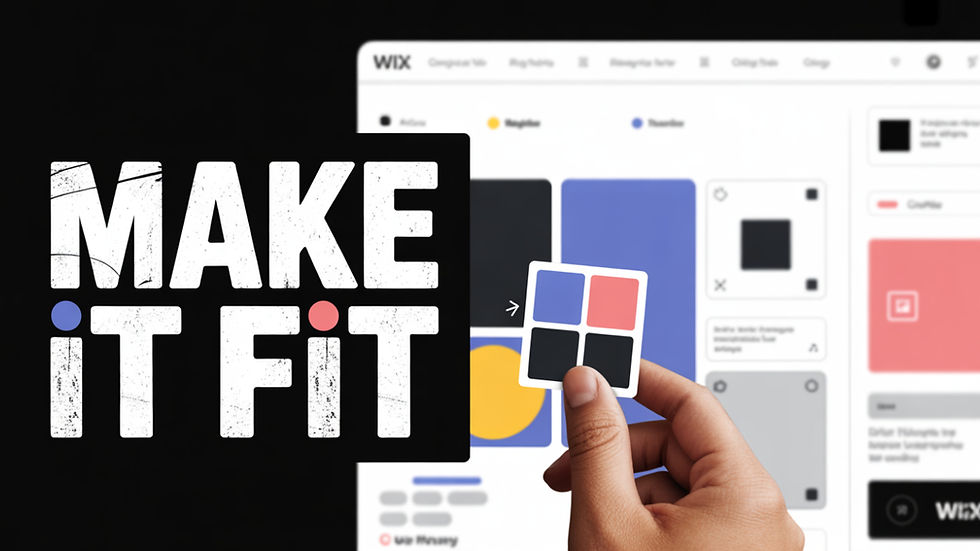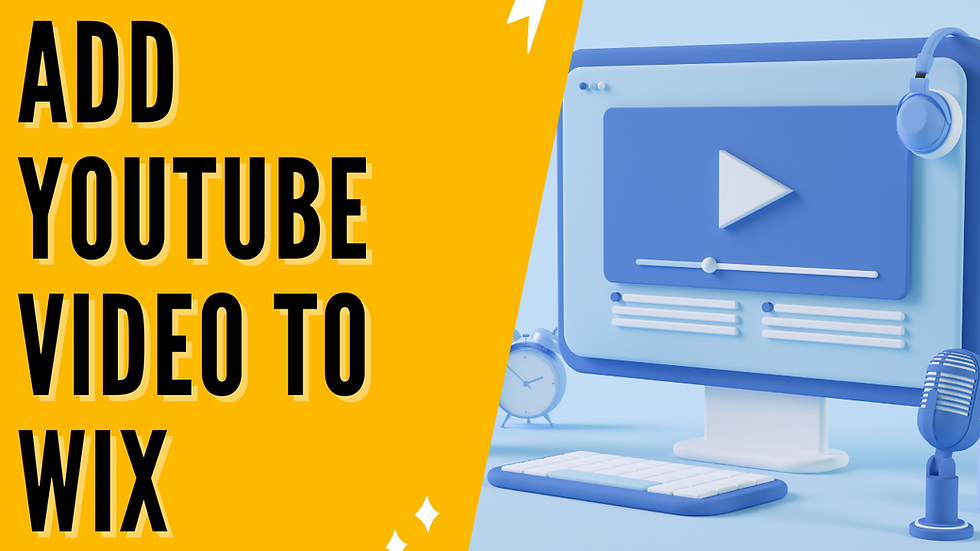The 6 Key Elements Of A High-Converting Website Home Page
- Marina Lotaif
- May 27, 2020
- 5 min read
Updated: Mar 24, 2022

Have you ever announced a new project, only to have people completely misunderstand how it was going to work, or who the intended audience was?
I’ve had that happen to me. Back in early 2019 I started a side project where I organized swag bags to be given to authors at workshops. Alas, when I first announced that project, several authors thought that I was organizing swag bags to be given to readers!
The problem was that I did not do a good job communicating my message. I thought everyone would understand what I meant, when what I should have done was look at the announcement from the perspective of the audience.
What I eventually learned from this mistake was that there are 6 key details that must be included in order to make sure that my message reaches its intended audience. I made sure to incorporate those details into the website for my swag bag project, and today I’d like to share them with you.
The 6 elements can be summarized as
Audience - Who is this for?
Process - How does it work?
Benefit - What does the audience gain?
Validation - Where has it worked before?
About - Who is behind the project?
Action - How does the audience participate?
BTW, I may be writing about how to include these details on a website, but these are also the same 6 key details you should include in any pitch. It doesn’t matter whether you are sending out an email, writing a press release, or designing a site to sell a product, these are the details you need to include so that your message reaches its intended audience, and convinces them to take action.
Audience - Who do you want to reach?
This is the point that trips me up the most. I am blessed with an audience made up of people in many different professions, so when I just want to target just one part of my audience, I have to choose my words carefully. If I do not then, like I explained in the beginning of the post, my message reaches the wrong audience and is misunderstood.
You also need to keep your audience in mind. One way to target an audience would be to mention problems only your audience would experience, or make references that only your preferred audience would catch. If you have to, be explicit about who your project is for. Bluntness might not be ideal but it’s better than targeting the wrong audience by mistake.
Process - How does it work?
This is a very simple detail that some people still manage to forget. Basically, process is my term for what happens when someone in the audience interacts with you. The process might be as simple as telling your audience “pay me money and I’ll send you my ebook”. Another example of a process would be when I tell a potential client that in exchange for a flat monthly fee, I will take care of updates, backups, and bug fixes for their website. You don’t always have to explicitly explain the process, but you still need to take pains to get the point across to your audience.
All that might seem obvious, but I can’t tell you how many times I’ve read someone’s pitch and not been able to tell you what they wanted me to do. Did they want me to pay for their service, join their church, or invade Mars?
Benefit - What does the audience gain?
It is natural to assume that the benefits are obvious, but the simple truth is that not everyone will see them. This is why you need to make it clear how your audience will benefit from your project.
In most cases you will want to explain the headache you solve for your audience, or how you make things easier for them. This is the easiest benefit to sell, but you still need to make sure that what you see as a benefit is the same thing as what your audience sees as a benefit. They might not find the same value in the benefit that you do, which is why you will want to check with a test audience first.
Validation - Where has it worked before?
Nothing wins people over like giving them proof that your product, service, or what-have-you works. You can demonstrate this in a variety of ways, including by sharing customer reviews, news coverage, product ratings from trusted industry sources, etc.
In the case of my swag bag project, it is so new that it has hardly any track record, but I still made a point of including mentions of past swag bags so that my audience could see that the project really existed, and had already worked with several events.
About - Who is behind the project?
As a general rule, people are uncomfortable with the idea of giving money to someone they don’t know, so it’s up to you to introduce yourself and make sure they can find out more about you. Even if your audience already knows you, you still want to re-introduce yourself and position yourself as an expert. To give you an example, I have found that people think of me as a blogger, which is why I make an effort to re-introduce myself as a web designer.
Action
What do you want your audience to do? Do you want them to sign up for a service, buy a product, or commit to join a collaborative project? Whatever it is, you need to make it clear to your audience what their next step is, and encourage them to take it.
This is what is known as a Call to Action. On my swag bag project site I just have the one call to action at the bottom of the page, but you will want to have a call to action at several different points on your home page. (I did not do this becauseI felt I needed to fully explain my project first.)
Now you know the 6 essential elements a website home page must have in order to attract the right audience and get them to take action. To help you out in your home page creation, make sure to click here to download the Home Page Planner Template.
This post was written by Nate Hoffelder
Author Bio:

Nate has been helping people fix broken tech since 2010. He repairs and maintains Wordpress sites, and acts as a virtual IT department for authors. He also blogs about the Kindle and indie publishing. You may have heard his site, The Digital Reader, mentioned on news sites such as the NYTimes, Forbes, BoingBoing, Techcrunch, Engadget, Gizmodo, or Ars Technica. You can learn more about Nate at www.NateHoffelder.com.



Welcome to Mahadev Book – India’s most reliable platform for safe and exciting online betting. Known for its secure payments, fast withdrawals, and responsible gaming environment, Mahadev Book offers access to 60,000+ live events every month across popular sports such as cricket, football, and basketball.
Whether you love live sports betting or enjoy exploring thrilling online casino games, Mahadev Book delivers a smooth, trusted, and rewarding experience. Start your journey today with your Mahadev Book ID to enjoy exclusive rewards, instant cricket IDs, and effortless navigation.
You can also log in directly through Mahadev Book Login and start playing right away.
Mahadev Book – where safe and responsible gaming begins.
I recently started using Laser247 and I’m really impressed! Laser 247 offers everything from cricket and football betting to roulette. The Laser247 App is user-friendly, and Laser247 Login is super quick. I got my Laser247 ID easily and started playing right away. Laser247 Online gives fast banking, great security, and 24/7 support. It’s perfect for both beginners and experienced players. I enjoy smooth gaming on both mobile and desktop. Definitely a top choice for online gaming and sports betting! know more :- https://laser247online.in/
Fairplay truly stands out as one of the best platforms for online gaming and live sports. Every feature whether it's the Fairplay website, Fairplay Login, Fairplay App, or Fairplay Live. works together seamlessly. The platform is fast, secure, and incredibly easy to use. I love how smooth the streaming is and how professional the overall design feels. If you’re looking for a platform that offers both excitement and reliability, Fairplay is definitely the one to try!
👉 Visit now: https://www.fairplay.social/
Fairplay has become my go-to platform for online gaming and live sports streaming. It offers a seamless experience across every feature — whether it's the Fairplay website, Fairplay Login, Fairplay App, or Fairplay Live.Everything runs efficiently without lag or confusion. The interface is clean, navigation is easy, and performance is always impressive. If you’re looking for a reliable and enjoyable online platform, Fairplay is definitely worth checking out!
👉 Visit now: https://www.fairplay.social/
Fairplay24 offers a smooth and reliable online experience. The platform is user-friendly, loads quickly, and provides great features. I’ve enjoyed using Fairplay24 and highly recommend it to others. know more :- https://fairplay24in.in/